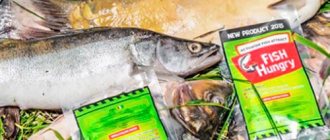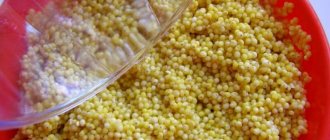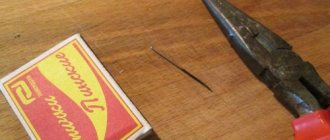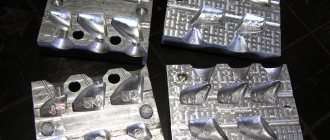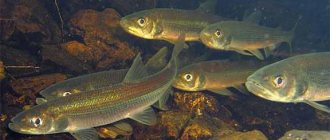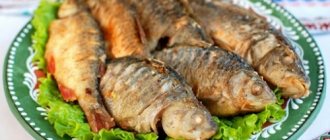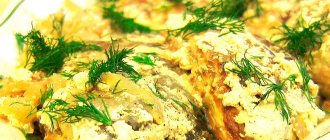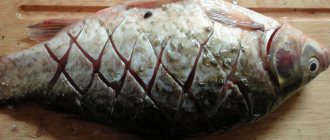Carp family
Crucian carp belong to the most numerous class - ray-finned fish. They belong to the genus of crucian carp from the carp family. Their “brothers” are distributed mainly in the Northern Hemisphere, although they are also found in the Southern Hemisphere. These fish are definitely not found on the continents of South America and Australia.
Many representatives of cyprinids are commercial fish. They are caught in natural reservoirs, bred in artificial ponds, and some are kept in aquariums.
In addition to carp, crucian carp, bream, roach, roach, tench, there are also more exotic species among them. For example, on the islands of Kalimantan and Sumatra there is a small Sumatran barb, colored with vertical black stripes. The Thai labeo has a gray body and bright orange fins, while the green puntius has an olive color with black spots.
They also include a cute fish called “lady's stocking”, or zebrafish. It lives in Asia in the rivers of India, Pakistan, Nepal, and Bangladesh. Her body is elongated and painted with horizontal stripes of silver and black.
Description of silver crucian carp
The genus of crucian carp includes only a few species: common, or golden, silver, Japanese and goldfish. All of them are freshwater, but differ in habitat and external characteristics.
Silver crucian carp inhabit rivers, streams and lakes. It lives in Western and Eastern Europe, Italy and Portugal, Siberia, India and North America. It was brought to all these regions in the second half of the 20th century from the Amur River, its original homeland. Currently, it is a serious competitor to golden crucian carp, and in some reservoirs it has contributed to its extinction.

The fish has a tall body with a rounded and thick back. His body is slightly flattened laterally. The dorsal fin is long and wide. One of its first rays is transformed into a sharp spine, just like the anal fin.
It is covered with smooth and wide scales, semicircular in shape. The color is silvery-greenish or grayish. In some cases, it has pink and orange shades. Silver crucian carp is a medium-sized fish, it grows up to 40 centimeters in length and can weigh up to two kilograms.
Commercial value
Many representatives of cyprinids, including silver crucian carp, are quite valuable commercial fish . Representatives of this species were introduced into waters in North America, ponds in Thailand, Western Europe and India.
Relatively recently, silver crucian carp has taken root well, thanks to which it has become a popular commercial fish in our country, in the lakes of Kamchatka. In recent years, goldfish are often raised in pond farms or bred by farmers. Among other things, the subspecies of silver crucian carp became the basis for the breeding of aquarium goldfish and other ornamental breeds in China.
Return to content
Differences from other fish
Silver crucian carp are sometimes easily confused with other representatives of its order. But this fish has characteristic features. The easiest way to distinguish it is from the goldfish, which is larger in size and has a rich copper and sometimes reddish color.
In the silver species, the head is more elongated and pointed, the fins are slightly longer, and the body forms a smooth arc. The goldfish has a wider body, and its back in the area of the fin is noticeably curved into a hump (see picture below). In addition, the latter has smaller scales, and there are more stamens in the gills.
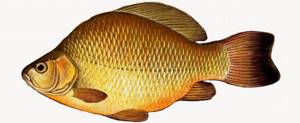
You can try to confuse our crucian carp with carp, but even here there are several clues. Firstly, the carp's body is more elongated. Secondly, it is convex with a hump from the head to the dorsal fin (seen in the picture below). Its scales are larger, have a dark border around the edges and black spots at the base.
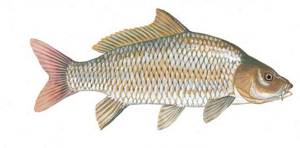
The head and eyes of carp are larger than those of crucian carp. The mouth is also larger and lowered, and the lips are thick. The carp is also distinguished by two short antennae, which crucian carp do not have. Dorsal fin with a small notch. In crucian carp it is even, decreasing towards the head.
Lifestyle of crucian carp
This is one of the most unpretentious fish. It adapts perfectly to many conditions and can live in bodies of water that other fish would not dare to approach. For example, in lakes thickly covered with mud.
Silver crucian carp loves reservoirs with a muddy bottom and mud, in which they look for worms and the remains of small animals. It can inhabit large lakes and rivers; golden crucian carp, in contrast, is less common in flowing water bodies.
By and large, crucian carp are omnivores. In addition to particles of dead animals, they feed on zoo- and phytoplankton, insect larvae, and small crustaceans. It itself serves as food for large and agile predators such as perch, pike or ruff.
Crucian carp tolerate unfavorable conditions better than other fish. If this happens, they can bury themselves in the “nyasha” and wait it out. Sometimes still living fish are found under a thick layer of silt, in places where the reservoir has long dried up.
In spring and summer, fish tend to move to areas with warm temperatures, often approaching shallow waters. They search for food especially actively in August, after spawning. During this period, they need to recuperate and gain energy before winter.
Before the onset of cold weather and before the final freezing of reservoirs, crucian carp go into wintering pits. These are areas with the least cold temperature in the reservoir, as well as a calm current. In winter they practically do not feed and begin to be awake only in spring.
Range, habitats
Silver crucian carp are found in the basins of rivers such as the Danube and Dnieper, Prut and Volga, as well as in the lower reaches of the Amu Darya and Syr Darya. Such representatives of freshwater ray-finned fish have become quite widespread in the waters of floodplain lakes of Siberian rivers and in the Amur basin, in the river waters of Primorye, as well as in reservoirs in Korea and China. The habitat of the natural distribution of silver crucian carp is very difficult to restore, but such fish are well adapted to currents, all kinds of river and lake fish, and therefore are perfectly adjacent to golden crucian carp.
In recent years, silver crucian carp have been quite actively spreading even in new habitats for this species, and are also able to displace golden crucian carp, which is due to the excellent species endurance and ability to survive in waters with extremely low oxygen levels. During dry periods, when the reservoir naturally dries out, crucian carp burrow into the muddy layer, going seventy centimeters deep, where they can easily “wait out” the most unfavorable time.
It is also surprising that representatives of this species can maintain full viability during wintering in water bodies that freeze strongly to the bottom. Caught crucian carp are able to live for three days in ventilated containers or baskets filled with well-moistened grass. However, the fairly rapid death of such fish is caused by oversaturation of the water with hydrogen sulfide, as well as other highly toxic substances for living beings.
The rate of colonization of new water bodies by silver crucian carp is simply incredible, and according to such indicators, this species may well compete with the unpretentious verkhovna carp. Some fish farmers express the idea that silver crucian carp in the reservoirs of our country have quite successfully supplanted many of their closest relatives. However, silver crucian carp prefer well-warmed reservoirs with standing water and a soft bottom. In rivers, such fish are rare species and try to stay in places with a slow current . In the waters of flowing lakes and ponds, crucian carp of this species are also quite rare.
Return to content
Reproduction
Spawning of silver crucian carp begins in May or early June. The main condition for the opening of the mating season is temperature. When the water exceeds 13-15 degrees, the fish begin to look for a mate and perform “wedding” rituals with might and main.
During this period, they completely refuse food. Eggs are laid in lush thickets of reeds, sedges and reeds, clinging to plant stems. After which the males fertilize her.
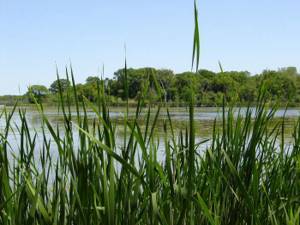
When only female individuals live in a reservoir, related species interact with the eggs. Their sperm speeds up development, but does not fertilize the eggs properly. In this case, exclusively female individuals are born, natural clones of their mother. This phenomenon is called gynogenesis.
The silverfish fry initially feeds on plankton, eventually moving on to larger foods. However, not everyone survives to adulthood. Their eggs are also eaten by frogs, newts, aquatic insects, birds and other fish.
Fishing for crucian carp
To catch goldfish, you need to know their schedule. In the spring, it is important for the fisherman to “watch” for the time when the fish are about to begin their mating season. Just before spawning and in the first days of searching for a pair, crucian carp are very active and eat literally everything they see.
Immediately after droppings, the fish also begins to eat. For a successful catch, you should choose a time with stable and calm weather that lasts for several days.
In summer, crucian carp have an abundance of food, so it becomes more difficult to “lure” them onto a hook. It is simply impossible to predict what the bite will be like. They are best caught in summer in ponds and lakes, where there are practically no other fish. The most favorable hours for fishing are early morning or before dawn.
In August, the fish are again actively looking for food, but in the fall its appetite decreases. Fish swim deeper into water bodies and switch to animal food. Here you have a better chance of catching crucian carp using maggots, worms and other protein baits, casting your fishing rod further away.
Description of the species, habitat and characteristics
To an inexperienced angler, these representatives of the species may seem very similar. In fact, there are significant differences in the appearance, habits and lifestyle of fish.
Golden carp
Common crucian carp (golden) received its name for the characteristic color of its scales, which have a golden tint. The back of the fish is dark, gray or brownish. The belly is always light, although depending on the situation, it can also have a different shade.
This species lives in overgrown reservoirs of Europe and Siberia, and is almost never found in rivers. He can be called a real swamp inhabitant. He is able to survive in truly extreme conditions. In dry summers, when the reservoir dries out greatly, crucian carp burrow deep into the silt, waiting out the drought there. In the same way, it tolerates severe freezing of small lakes in winter, burrowing to a depth of about half a meter. The crucian carp hibernates in this way until the ice melts. For this reason, there are many shallow water bodies where only crucian carp live.
Other types of fish, even if they get into ponds in different ways, alas, will not be able to survive the winter. Even if the water does not freeze to the very bottom, there simply will not be enough oxygen.
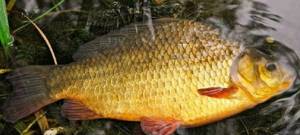
Dense thickets of grass or reeds are the home of this swamp inhabitant. The favorite habitats of crucian carp are the border between the grass and the deep slope. It is often found in “windows” among dense thickets of algae. In the thickets, fish find food, a comfortable temperature and shelter from the sun's rays.
Goldfish
Silver crucian carp has spread even wider on the planet. It is found in most of Europe, Asia, and is especially common in China and Japan. It differs from the golden one by having a silvery color on the belly and sides. Currently introduced to India and some countries in North America. Unlike golden crucian carp, it is often found in rivers, where it prefers places without fast currents. For this difference, some fishermen received the name river crucian carp.
In bodies of water with flow, fish feed on caddis flies, worms, mollusks, crustaceans and insects. This species does not like strong thickets, but if vegetation is present, it often stays near it. The color greatly depends on the type of reservoir, the color of the bottom, the transparency and shade of the water. There are individuals of a dark gray color, and in some reservoirs, on the contrary, almost white.
Recommended reading: Fishing for grayling in winter
This species often does not burrow into the silt, but continues to live throughout the winter. This phenomenon usually occurs in reservoirs with a hard, sandy or clay bottom. This is explained by the fact that a lot of methane is formed in silted lakes during the winter. The gas does not have time to pass through thick ice, remaining in the water, making it difficult for fish to breathe. Having buried themselves in the mud, crucian carp fall into sleep, during which all vital processes are greatly inhibited.
Reservoirs with a hard bottom in winter remain quite comfortable for underwater inhabitants. The depth of the reservoir is perhaps of decisive importance. In shallow waters, a lot of greenery always grows during the summer. Dead algae under the ice consume a significant amount of oxygen, while releasing the same methane.
Fish growth rate
Silver crucian carp grows much faster than its counterpart and is a valuable object in fish farms. Having reached the age of two years, the fish weigh up to 400 grams, especially in the southern regions. With age, the weight of individual fish can exceed 2 kg. The whitebait feeds mainly on zooplankton and phytoplankton. The large one eats animal and plant food, and at times does not disdain carrion.
Silver and golden carp have much in common, but there are also significant differences between them. The mass of common crucian carp reaches two kilograms, according to some sources, more. But for the most part, specimens weighing 0.5 kg are considered a serious trophy among fishermen. Despite its extraordinary vitality, this fish grows slowly. On average, at the age of two years, crucian carp weighs about 100 grams. This is a rather small increase compared to other species of the carp family. After another year or two, he reaches sexual maturity.
It often happens that in small ponds with a poor food supply, only small crucian carp live. Moreover, its size seems to be calibrated. The presence of other fish species in the neighborhood can greatly influence the size and abundance of a species. It is known that rotan is a dangerous enemy of crucian carp, actively eating away the young. They hunt for juvenile crucian carp and perch and pike.
Features of reproduction
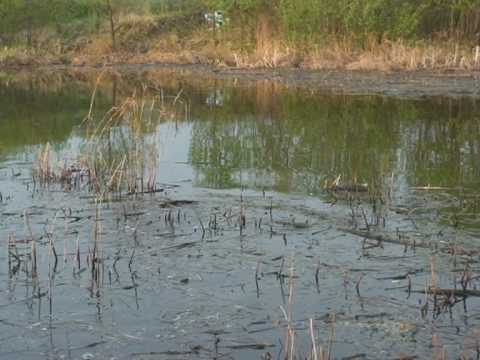
Crucian carp spawns in water heated to 14-16 degrees, at a depth of about half a meter. The fish rub against various branches of bushes and stems of aquatic vegetation, to which the eggs adhere in strips. The process can take place several times during the summer, or more precisely, during the time when the water is warm enough. At times, crucian carp can spawn even in August or September. This is especially observed in the southern regions, at a water temperature of 15-20 degrees.
We recommend reading: Carp fish, description of the species
There is an interesting feature in the reproduction of silver crucian carp: predominantly females participate in the process. Of the emerging fry, females again predominate. In some reservoirs, only females spawn. In this case, the eggs are fertilized by other fish, mainly carp fish. These can be bream, roach, carp, carp, tench and others. The egg of a crucian carp carries a double set of chromosomes and does not need to merge its nucleus with the nucleus of the sperm. For the development of the egg, penetration of any sperm into it is required, which is subsequently resorbed.
As a result of such unusual fertilization, hybrid forms of crucian carp appear from time to time. Unfortunately, hybrids cannot continue the race as an independent species due to infertility. In addition, they are limited in growth and life expectancy.
Waterfowl often become carriers of eggs to neighboring ponds and lakes. Thus, they contribute to the natural stocking of even the smallest and most inaccessible reservoirs with fish.
Indeed, how else can one explain the appearance of crucian carp in forest ponds, the size of which can be several meters. In such “puddles” one of the minnow species often lives next to them.
Breeding
Thanks to their excellent ability to adapt to different conditions, silver crucian carp are easy to breed in your own pond. It is advisable that the reservoir is not too shallow, about 2 meters deep.
For food, fish can be given special food, steamed cereals, as well as insects, maggots, worms, in general, everything that is used to catch them. Sometimes duckweed, an aquatic grass, is thrown into reservoirs. It contains a large number of useful elements, but it grows very quickly and needs to be removed periodically.
They feed crucian carp up to two times a day, and in cold weather they stop feeding altogether. You can't give too much food. What is not eaten will begin to rot and degrade the water quality in the pond.
Anthropogenic factors
The influence of anthropogenic factors on silver crucian carp is not the least important. Although the adaptation of crucian carp to environmental conditions is quite painless, the human impact on the environment should also be taken into account. More and more rivers and reservoirs are becoming unusable due to human activity. Pollution of natural resources forces fish to migrate to cleaner places. Unfortunately, if this process continues, then after a while we may not see this river beauty at all. But in good weather you really want to sit on the shore with a fishing rod and catch your treasured crucian carp.
From silver to gold
The goldfish is the ancestor of the goldfish. It was from this that the Chinese developed this decorative beauty back in the Middle Ages. From there, the fashion for it spread to Asia, and only then captured Europe.
It includes many breeds that are distinguished by a variety of colors. The common goldfish is entirely orange. It can grow up to 30 centimeters in length and is more similar to the silver crucian than its other counterparts.
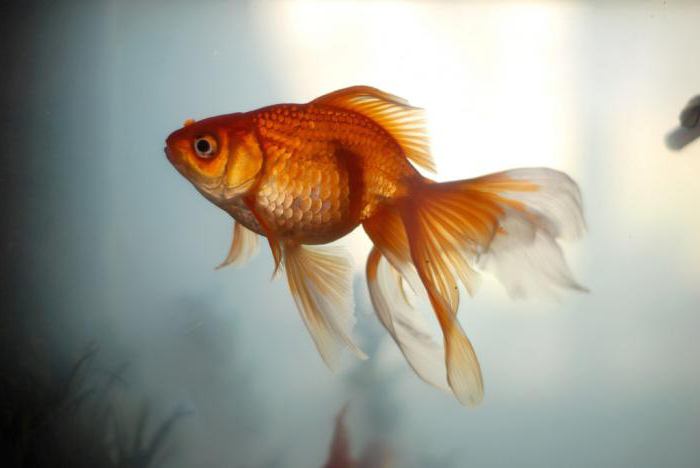
There are also fish with white-orange, dark brown, and black colors. Their fins and tails are often elongated and resemble butterfly wings. There are species with huge eyes, swollen bodies and other features. They are bred in aquariums and also used in laboratories for various studies.

